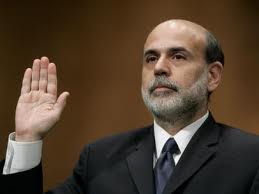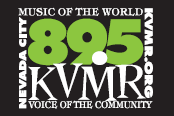
Money Matters airs today. "QE3" , Money Class 1 taking place this month! Update 9 20 2012
Money Matters airs today at noon on KVMR 89.5 and 105.1 FM. "QE3" will be explained with commentary. Market news will also be covered.
Still looking for a Keynesian Economist to debate on air. If you know of someone, please contact me.
Money Class ONE is September 28th at 11:00 am at Alta Sierra Pizza (Larry and Lena's) right off highway 49 at the entrance of Alta Sierra area.
Email us to register and/or just show up and bring your check. Cost is $199.00. See Jane Do Members can also attend.
An article for your enjoyment:

Ben’s Bazooka
Last week, Federal Reserve Chief Ben Bernanke went “all in” trying to fix the economy, beginning yet again another round of Quantitative Easing (QE3) and this time around he pulled out all the stops.
Known in layman terms as plain old money printing, Bernanke pulled out Henry Paulson’s infamous bazooka (your ex Secretary Treasurer) and fired it big time.
In the biggest round of attempted stimulus yet, the Federal Reserve will buy up to 40 billion dollars of mortgage backed securities a month (those toxic mortgages we all know and love), and unlike previous QE’s, there will be no limit on how much they will spend or how long they will perform this monetary trick.
In addition, they will “twist” (rollover) another 45 billion or so more a month of short term Treasury debt (think Government IOU’s with 30 or 60 day terms) into long term IOU’s. (Think 10, 20 or 30 years IOU’s).
Compare that to the Fiscal Cliff proposed cut backs which are 100 billion a year. This new program will print up almost 5 times the proposed cuts in the first year alone and that doesn’t include the “twist’ part.
The Feds also pledged to keep interest rates near zero until 2015, the third time they’ve kicked that date out in order to provide almost interest free loans to the banking industry.
The markets reacted violently to the upside on the day the 3 prong program was announced and the news wires were ablaze with commentary, both positive and negative on what a program of this scope and magnitude would do or fail to do in the months and years to come.
Limiting the program to stopping only when the jobs picture improves, one only has to look at the chart below to question whether QE works at all in regards to unemployment. The first QE program was initiated in November of 2008 followed by QE2 in November of 2010.

As the chart illustrates, unemployment took little notice of either previous QE programs and in fact headed north with a vengeance during the whole time these QE’s were in place.
What the previous QE’s did bring us however was a rising stock market (to the chagrin of Wall Street) and a gigantic Federal Reserve Balance sheet. (The Fed balance sheet is the total of all the “stuff” they’ve bought and much of it is more of those toxic mortgages they now plan to buy again).
QE also apparently drove the prices of commodities higher which is all the things you buy at the grocery store.
Note in the chart below the consistent rise of the CRB commodities index that encompasses the periods of from the start of QE1 until the approximate end of QE2.
Supporting the relationship that QE causes prices to rise, note that QE2 ended May of 2011 and at that point prices started down again.
This relationship between QE and rising prices is well known among economists on both sides of the aisles and its why QE is regarded as very dangerous, rarely used and if implemented, done so for very short periods only.
That the U.S. Federal Reserve is embarking yet again on another round of QE and is putting no limit or time frame on this current tsunami of paper dollars soon to ooze out of the printing presses should be a cause for grave concern.
This article expresses the opinions of Marc Cuniberti. Mr. Cuniberti hosts “Money Matters” on KVMR FM 89.5 and 105.1 FM on Thursdays at noon. He has been featured on NBC and ABC television and on a host of made for TV documentaries for his economic insights. His website is www.moneymanagementradio.com







